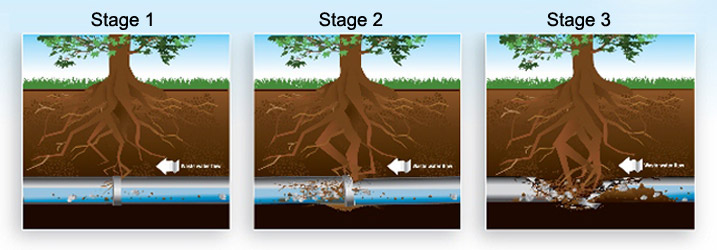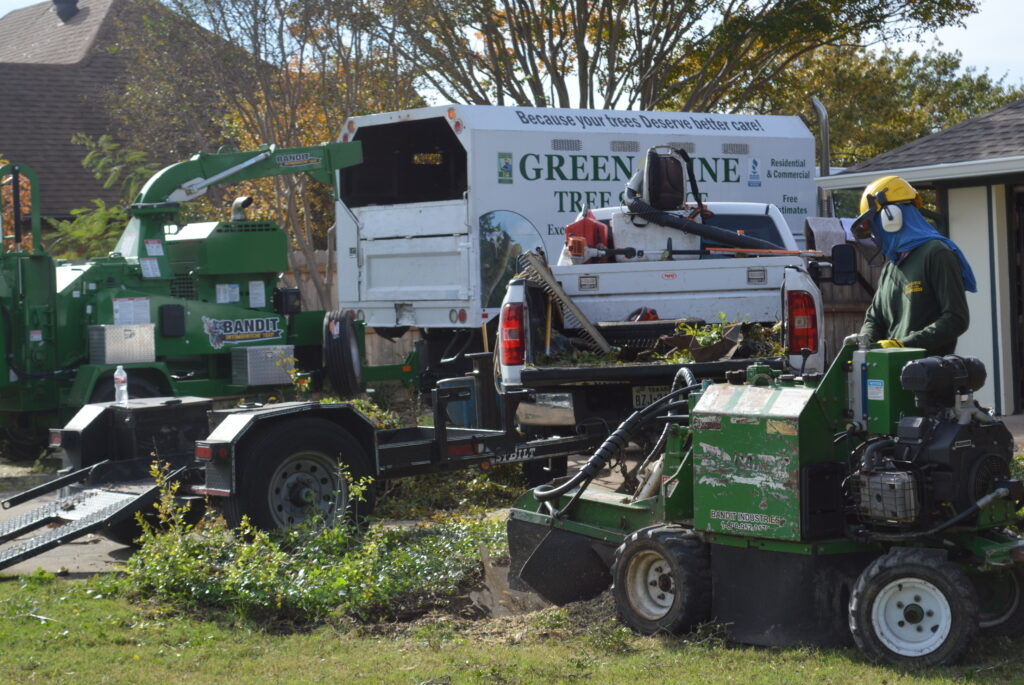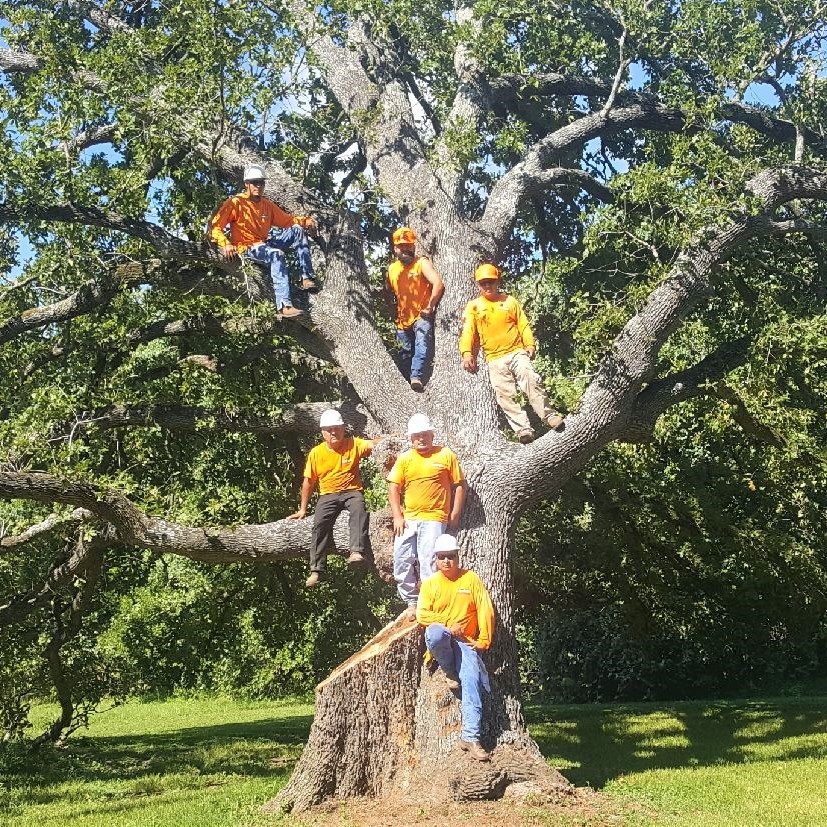Tree Roots in Sewer Line: What You Need to Know
Tree roots invading sewer lines is a common problem many homeowners face, and it can lead to serious and costly issues. In this article, we’ll explore everything you need to know about tree roots in sewer lines, including how to identify the problem, prevent it, and address it when it arises.
What Are Sewer Lines?
Sewer lines are underground pipes that transport wastewater from homes to municipal treatment facilities or septic tanks. These pipes are a critical part of your plumbing system, ensuring that water and waste are properly disposed of.
Why Do Tree Roots Invade Sewer Lines?
Tree roots instinctively seek out moisture and nutrients, which makes sewer lines a prime target. As roots grow, they search for sources of water, and even small cracks or joints in sewer pipes can be enough for them to find their way in. Once inside, the roots thrive on the water and nutrients found in wastewater.
How Tree Roots Enter Sewer Pipes
Cracks and Openings in Pipes
Sewer pipes made of materials like clay, cast iron, or older plastic are prone to cracking or separating at joints over time. These small openings create the perfect entry points for tree roots.
The Attraction of Moisture
Tree roots are incredibly adept at detecting moisture. Even the smallest leak in a sewer line can attract roots from nearby trees. Once the roots reach the pipe, they can penetrate and grow, leading to significant blockages.
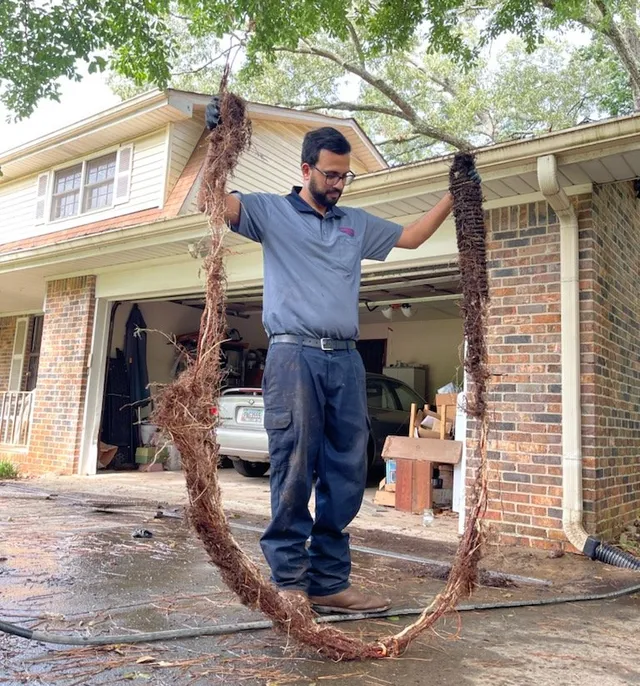
Types of Trees That Commonly Cause Sewer Problems
Certain tree species are more likely to cause problems with sewer lines. Trees with aggressive root systems like willows, oaks, and poplars are notorious for invading sewer pipes. If you have these trees on your property, you’ll need to be particularly vigilant.
Signs That Tree Roots Have Invaded Your Sewer Line
Slow Drainage
One of the first signs that tree roots may be invading your sewer line is slow drainage. If you notice that water is draining slowly from sinks, toilets, or tubs, it could be a sign of root intrusion.
Gurgling Sounds
Strange gurgling noises coming from your drains are another warning sign. This could indicate that tree roots are blocking part of your sewer line, causing air pockets and disrupted water flow.
Frequent Clogs and Backups
If you’re dealing with frequent clogs or backups in your plumbing system, it’s possible that tree roots are the culprit. Blockages caused by roots can make it difficult for waste to pass through, leading to backups.
Unpleasant Odors
A foul odor around your home or yard may be a sign that tree roots have damaged your sewer line. When roots invade, they can cause cracks that allow sewage to seep out, leading to unpleasant smells.
The Risks of Ignoring Tree Roots in Sewer Line
Ignoring tree roots in your sewer line can lead to more than just a few clogged drains.
Structural Damage to Your Plumbing System
Over time, tree roots can cause severe damage to your pipes, leading to breaks, leaks, and even the collapse of entire sections of your plumbing system.
Expensive Repair Costs
If the issue is left unresolved, it can result in costly repairs. Excavating and replacing damaged sewer lines can be a major expense.
Potential for Sewage Backup and Health Hazards
Roots blocking your sewer line can lead to backups that cause raw sewage to flow back into your home, creating serious health risks and damage to your property.
Preventing Tree Root Infiltration in Sewer Lines
Planting Trees Away from Sewer Lines
One of the best ways to prevent tree roots from invading your sewer line is by planting trees far away from your plumbing system. Know where your sewer lines are located and choose tree species with non-invasive roots.
Regular Sewer Inspections
Periodic sewer inspections using video cameras can help detect early signs of root intrusion before they cause major damage.
Root Barriers
Installing root barriers can also help prevent tree roots from reaching your sewer lines. These barriers are made from materials that block roots from growing near your pipes.
Using Sewer-Safe Trees
When landscaping, opt for trees with less aggressive root systems. Species like dogwoods, Japanese maples, and magnolias are safer options for planting near sewer lines.
Techniques for Extracting Tree Roots from Sewage Lines
Mechanical Augers or Rooters
A professional plumber can use a mechanical auger to cut through tree roots inside the sewer line. While this method is effective, it’s typically a temporary solution.
Chemical Root Treatments
Chemical treatments can be used to kill tree roots and prevent them from growing back. However, this method should be used with caution to avoid harming the environment.
Excavation and Pipe Replacement
In extreme situations, it might be required to dig up and replace the pipes. This involves digging up the damaged section of the pipe and replacing it with a new, root-resistant pipe.
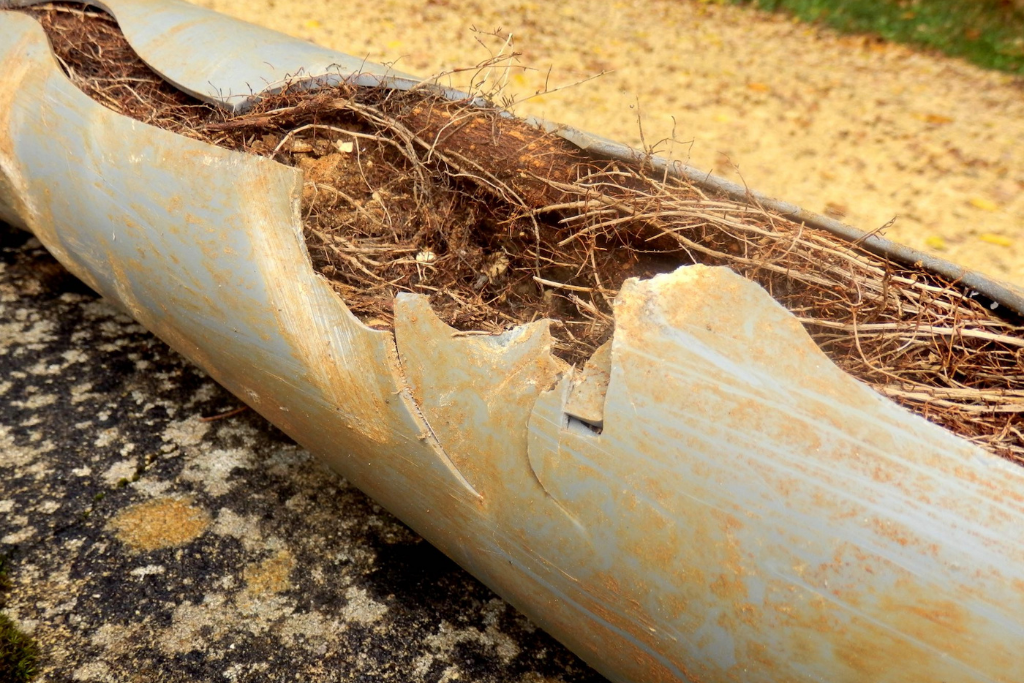
How Professionals Diagnose Tree Root Problems in Sewer Lines
Video Camera Inspections
Plumbers often use video cameras to inspect the inside of your sewer line, allowing them to pinpoint where roots have entered and the extent of the damage.
Dye Testing
Dye testing can help determine whether there are leaks in your sewer line, which could indicate root intrusion.
When to Call a Professional Plumber
If you notice any of the signs mentioned earlier, it’s time to call a professional plumber. While some minor issues can be handled with DIY solutions, tree root problems in sewer lines often require expert help.
Long-Term Solutions to Prevent Tree Root Issues
Pipe Lining and Trenchless Pipe Replacement
Pipe lining involves inserting a new lining into your existing sewer pipe, effectively sealing off any cracks and preventing roots from entering. Trenchless pipe replacement is a less invasive method that doesn’t require digging up your yard.
